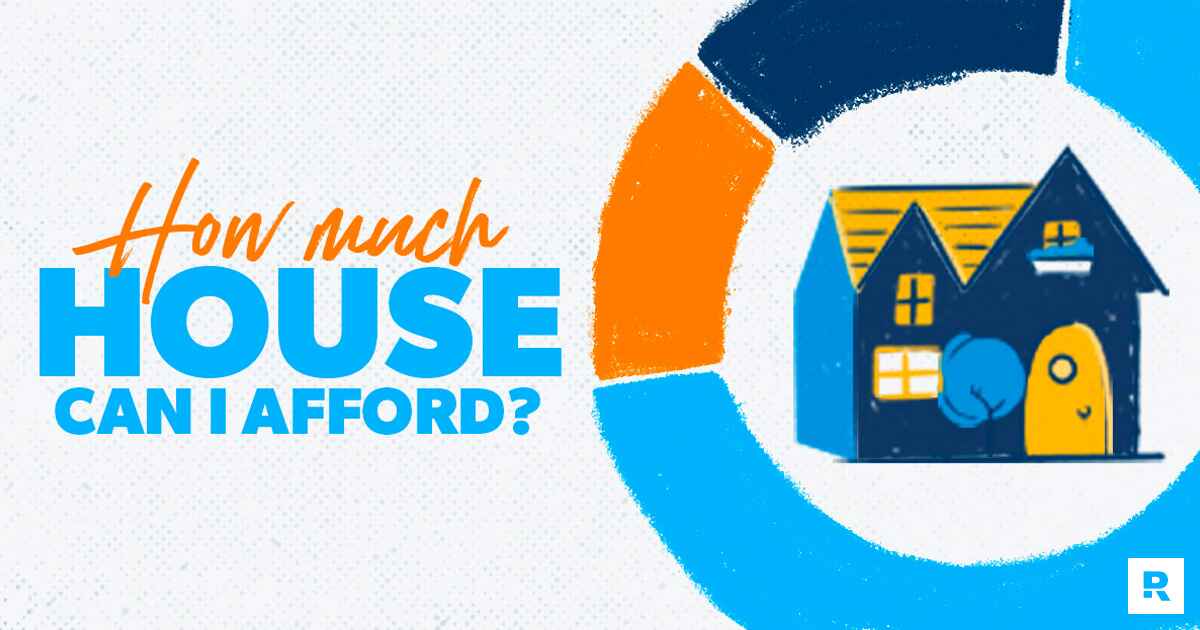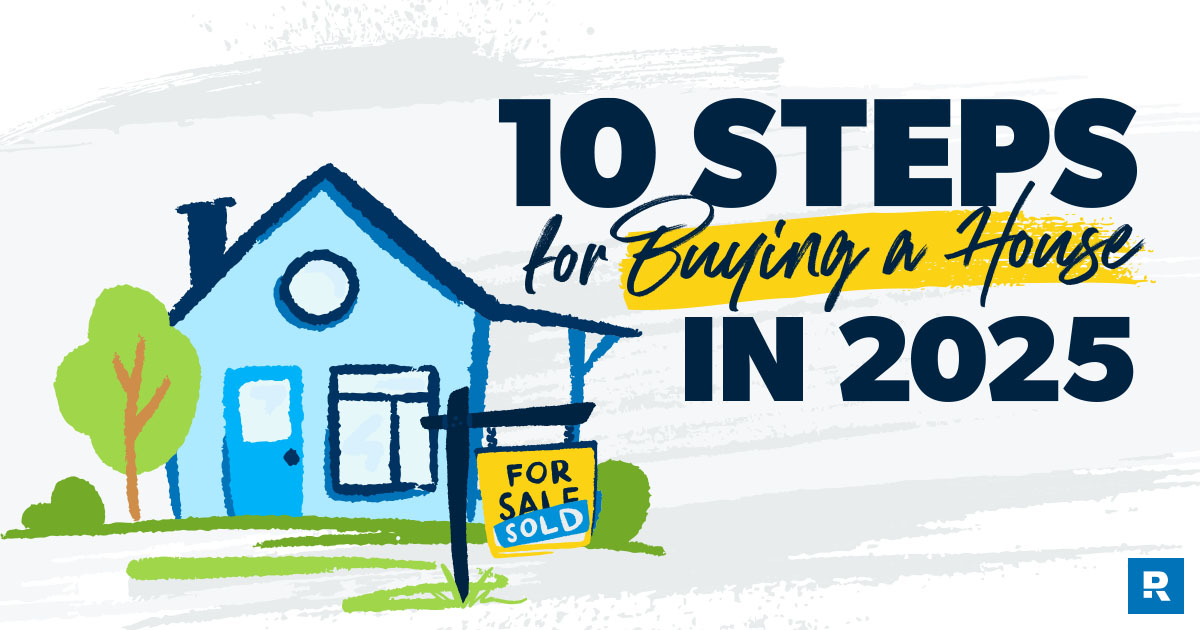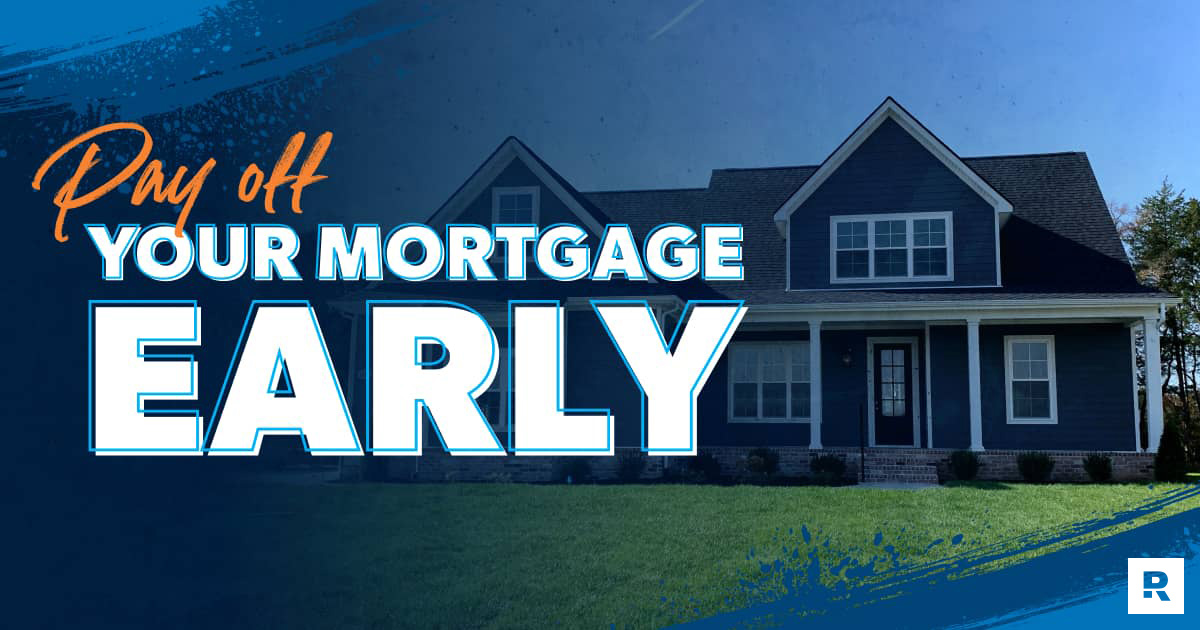
How Much House Can I Afford?
Figuring out how much house you can afford is tricky. But our home affordability calculator will help you calculate a budget that will work for you.
Use our mortgage calculator to get an idea of your monthly payment by adjusting the interest rate, down payment, home price and more. To find out how you can pay off your mortgage faster, try our mortgage payoff calculator.
To begin the mortgage process, you’ll need to meet with a lender and be prepared to provide proof of:
It’s likely your lender will approve you for more money than you should borrow. Just because you qualify for a big loan doesn't mean you can afford it!
A good lender will clearly explain your mortgage options and answer all your questions so you feel confident in your decision. If they don’t, find a new lender. A mortgage is a huge financial commitment, and you should never sign up for something you don’t understand!
If you’re ready to get prequalified for a mortgage loan, we recommend talking with Churchill Mortgage.
The answer is, yes! If you apply for a mortgage without a credit score, you’ll need to go through a process called manual underwriting. Manual underwriting simply means you’ll be asked to provide additional paperwork—like paystubs and bank statements—for the underwriter to review. This is so they can evaluate your ability to repay a loan. Your loan process may take a little longer, but buying a home without the strain of extra debt is worth it! Keep in mind, not having a credit score is different than having a low credit score. A low credit score means you have debt, but having no credit score means you don’t like debt!
Related: The Truth About Your Credit Score
Not every lender offers manual underwriting. Do a little research on the front end to find the ones in your area that will.
A quick conversation with your lender about your income, assets and down payment is all it takes to get prequalified. But if you want to get preapproved, your lender will need to verify your financial information and submit your loan for preliminary underwriting. A preapproval takes a little more time and documentation, but it also carries a lot more weight when you’re ready to make an offer on a home.
Buying too much house can quickly turn your home into a liability instead of an asset. That’s why it’s important to know what you can afford before you ever start looking at homes with your real estate agent.
We recommend keeping your mortgage payment to 25% or less of your monthly take-home pay. For example, if you bring home $5,000 a month, your monthly mortgage payment should be no more than $1,250. Using our easy mortgage calculator, you’ll find that means you can afford a $211,000 home on a 15-year fixed-rate loan at a 4% interest rate with a 20% down payment.
Save up a down payment of at least 20% so you won’t have to pay private mortgage insurance (PMI). PMI is an extra cost added to your monthly payment that doesn’t go toward paying off your mortgage. If you’re a first-time home buyer, a smaller down payment of 5–10% is okay too—but then you will have to pay PMI. No matter what, make sure your monthly payment is no more than 25% of your monthly take-home pay on a 15-year fixed-rate mortgage. And stay away from VA and FHA loans!
Saving a big down payment takes hard work and patience, but it's worth it. Here's why:
With so many mortgage options out there, it can be hard to know how each would impact you in the long run. Here are the most common mortgage loan types:
We recommend choosing a 15-year fixed-rate conventional loan. Why not a 30-year mortgage? Because you’ll pay thousands more in interest if you go with a 30-year mortgage. For a $250,000 loan, that could mean a difference of more than $100,000!
A 15-year loan does come with a higher monthly payment, so you may need to adjust your home-buying budget to get your mortgage payment down to 25% or less of your monthly income.
But the good news is, a 15-year mortgage is actually paid off in 15 years. Why be in debt for 30 years when you can knock out your mortgage in half the time and save six figures in interest? That’s a win-win!
Before you lock in an interest rate, it’s worth knowing that high interest rates bring higher monthly payments and increase the amount of interest you’ll pay over the life of your loan. In contrast, a low interest rate saves you money in both the short and long term.
Here’s what the typical monthly mortgage payment includes:
If you want to pay more on your mortgage, be sure to specify you want any extra money to go toward the principal only, not an advance payment that prepays interest.
Getting preapproved for a mortgage is just the beginning. Once the financial pieces are in place, it’s time to find your perfect home! While it’s one of the most exciting stages of the process, it can also be the most stressful. That’s why it’s important to partner with a buyer’s agent.
A buyer’s agent can guide you through the process of finding a home, negotiating the contract, and closing on your new place. The best part? Working with a buyer’s agent doesn’t cost you a thing! That’s because, in most cases, the seller pays the agent’s commission. Through our Endorsed Local Providers (ELP) program, our team can match you with the top real estate agents we recommend in your area.
Mortgage terminology can be confusing and overly complicated—but it doesn’t have to be! We’ve broken down some of the terms to help make them easier to understand.

Learn about
Across the country, average home prices have been going up. Despite the rise in home prices, you can still find a perfect home that’s within your budget! As you begin to house hunt, just make sure to consider the most important question: How much house can I afford? After all, you want your home to be a blessing, not a burden.

Learn about
The initial cash payment, usually represented as a percentage of the total purchase price, a home buyer makes when purchasing a home. For example, a 20% down payment on a $200,000 house is $40,000. A 20% down payment typically allows you to avoid private mortgage insurance (PMI). The higher your down payment, the less interest you pay over the life of your home loan. The best way to pay for a home is with a 100% down payment in cash! Not only does it set you up for building wealth, but it also streamlines the real estate process.
Learn about
A home loan designed to be paid over a term of 15 years. The interest rate remains the same for the life of the loan. A 15-year mortgage will have a higher monthly payment but a lower interest rate than a 30-year mortgage. Because you pay more toward the principal amount each month, you’ll build equity in your home faster, be out of debt sooner, and save thousands of dollars in interest payments.
A home loan designed to be paid over a term of 30 years. The interest rate remains the same for the life of the loan. A 30-year mortgage will have the lowest monthly payment amount but usually carries the highest interest rate—which means you’ll pay much more over the life of the loan. Unless you like the idea of paying thousands of dollars more for your home than you have to and staying in debt twice as long as you need to, opt for a 15-year mortgage if you’re not paying cash for your home.
A home loan designed to be paid over a term of 30 years. The interest rate does not change for the first five years of the loan. After that time period, however, it adjusts annually based on market trends until the loan is paid off. The interest rates are usually comparable to a 30-year mortgage, but ARMs transfer the risk of rising interest rates to you—the homeowner.

Learn about
The ongoing cost of financing a home purchase. This is generally shown as an annual percentage of the outstanding loan. For example, a 5% interest rate on a $200,000 mortgage balance would add $833 to the monthly payment. As the balance is paid down through monthly payments, the interest portion of your payment is reduced.

Learn about
This is calculated as a percentage of your original loan amount, and is based on your credit score and down payment. PMI protects the lender in case you don’t pay your mortgage, and it slaps an extra fee on top of your monthly payment that doesn’t apply to your loan balance. In most cases, you can avoid PMI if you put at least 20% down on your home purchase.

Learn about
Generally a requirement for any home mortgage. The premium is usually included with the monthly mortgage payment. Costs and coverage vary by state and the value of the home. Get professional advice to make sure you have the proper coverage. Homeowner’s insurance can cover the cost to repair or rebuild due to damage caused by events like fire, windstorms, hail, lightning, theft or vandalism. It can also protect your possessions inside your home like clothes, furniture and electronics.

Learn about
Fees due in exchange for being part of a homeowner’s association. A homeowner’s association is an organization in a planned community that maintains and reinforces rules for the properties in its jurisdiction. By purchasing a property in such a community, the homeowner is agreeing to the HOA’s rules and fees. HOAs maintain a significant amount of legal power over property owners regarding the outside conditions of the home.

Learn about
The amount you pay each month for your mortgage, homeowner’s insurance, and HOA fees. This payment should be no more than 25% of your monthly take-home pay. That leaves plenty of room in your budget to achieve other goals, like saving for retirement or putting money aside for your kid’s college fund.

Learn about
Taxes you have to pay based on the government’s appraisal of your property. These are usually included as part of your monthly mortgage payment. Property taxes vary greatly depending on location and home price.
Using an online mortgage calculator can help you quickly and accurately predict your monthly mortgage payment with just a few pieces of information. It can also show you the total amount of interest you’ll pay over the life of your mortgage.
A monthly mortgage payment is made up of many different costs. Our mortgage calculator’s payment breakdown can show you exactly where your estimated payment will go: principal and interest (P&I), homeowner’s insurance, property taxes, and private mortgage insurance (PMI).
Don’t know which mortgage is right for you? Use our mortgage calculator to estimate the cost of different loan types and compare interest paid for a 15-year mortgage and a 30-year mortgage. You may be surprised to see how much you can save in interest by getting a 15-year fixed-rate mortgage.
Considering what to offer on a home? Change the home price in the loan calculator to see if going under or above the asking price still fits within your budget.
You can also use our mortgage payment calculator to see the impact of making a higher down payment. A higher down payment will lower your monthly payments not only because it reduces the amount of money you borrow, but also because it can help you qualify for a lower interest rate. In some cases, a down payment of at least 20% of the home’s purchase price can help you avoid paying private mortgage insurance (PMI).

Shopping for a house is easier with a vetted professional on your side. RamseyTrusted pros are ready to help.

When you find your dream home, you don't have to wonder if you can actually afford it. Churchill can help you get ahead.

Figuring out how much house you can afford is tricky. But our home affordability calculator will help you calculate a budget that will work for you.

Want to buy a home in 2024? We’ll walk you through how to buy a house in 10 steps.

Want to get rid of your house payment for good by paying off your home loan? Here are five tips for how to pay off your mortgage early.

Whether you’re trying to buy your first home, getting ready to sell, or just want to be a smarter homeowner, it’s always good to have your finger on the pulse of real estate trends so you can make informed decisions. Simply enter your email to get monthly content that’ll help you navigate the market with confidence.